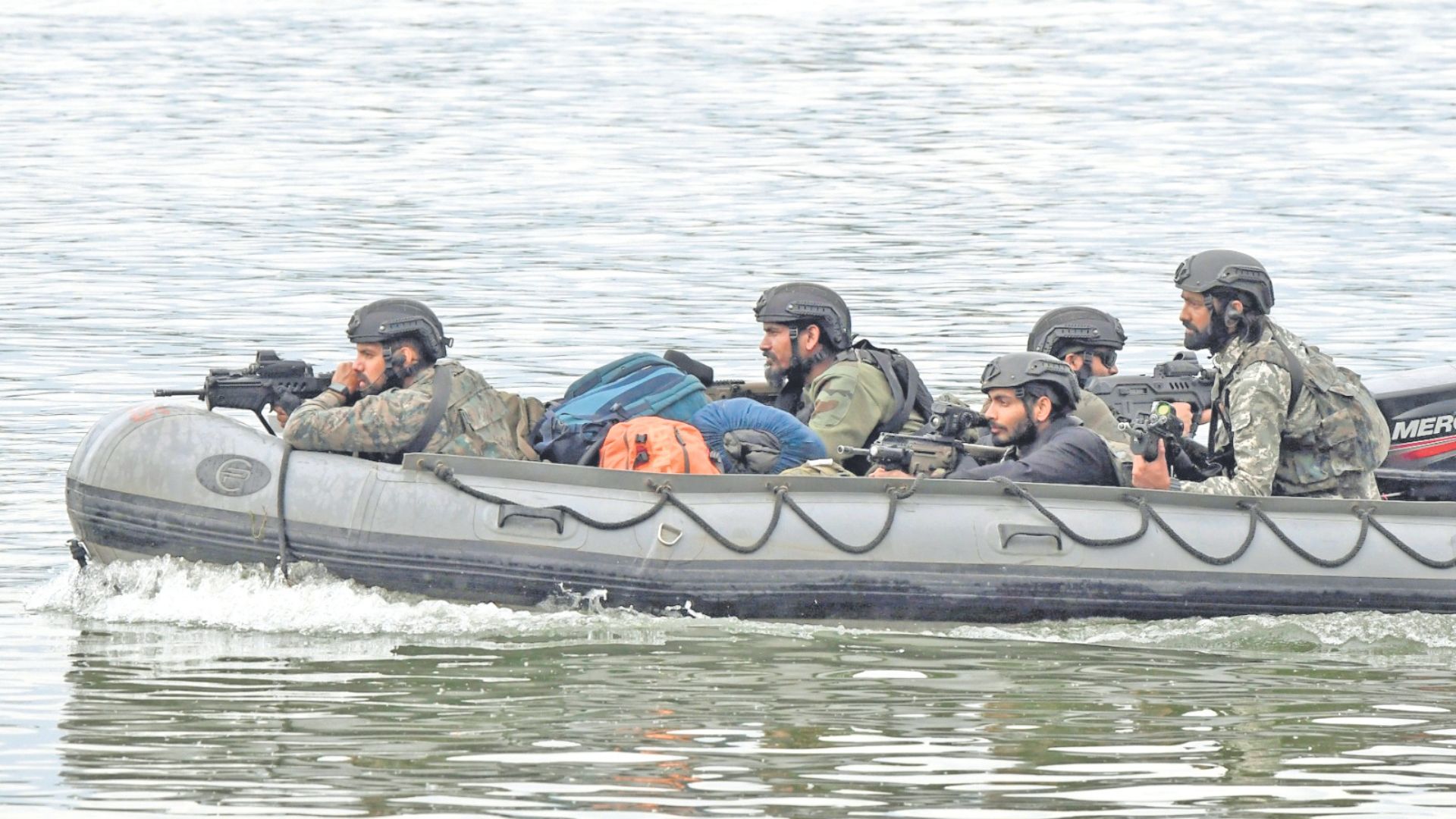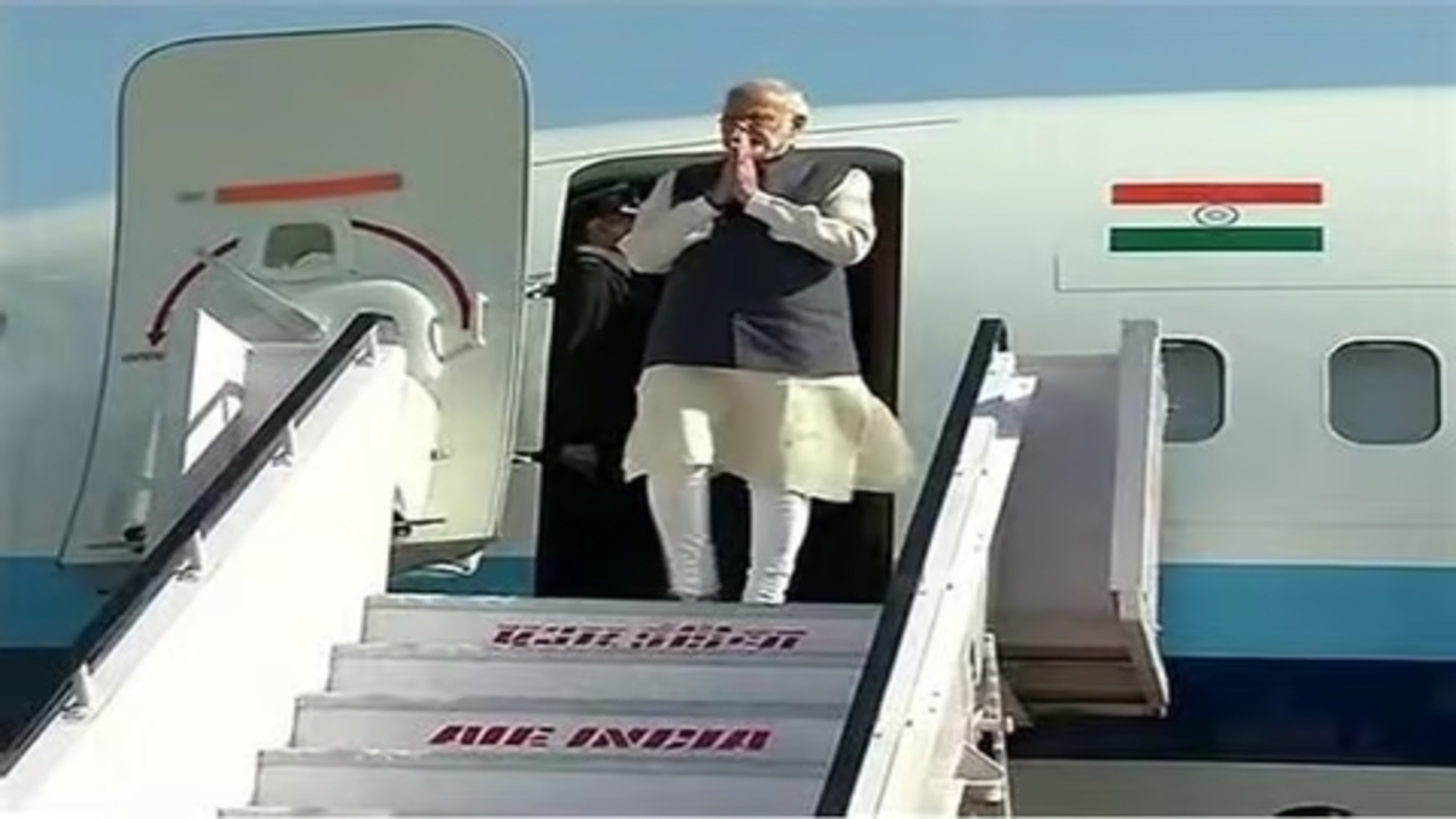
Several analysts reported that the Indian Navy’s extensive mission to save a merchant vessel from pirates near Somalia on March 16, 2024, ,highlighted the advancement of India’s military special forces, putting them at par with the world’s most elite units. Indian Navy commandos successfully took over a ship located 260 nautical miles (approximately 480 kilometres) away from the Somalia coast, liberating 17 members of the crew—comprising nine individuals from Myanmar, seven from Bulgaria and one from Angola—in the process.
According to a statement by the Indian Navy, the mission included the deployment of a navy destroyer, a patrol vessel and the execution of an airdrop by an Indian Air Force C-17 transporter over 1,500 miles to deliver marine commandos. Additionally, the operation utilized a naval drone, a reconnaissance drone and a P-8 surveillance aircraft.
The rescue marked the end of a 40-hour mission. Commandos were deployed from a military C-17 aircraft by parachute to take over the ship in an assault that effectively trapped and compelled all 35 Somali pirates on board to give up.
Days after the navy’s successful recapture of the hijacked bulk carrier and liberation of several hostages, India has transported the 35 pirates to India’s financial hub, Mumbai, to face legal proceedings. According to a statement by the navy, the destroyer, the INS Kolkata, the leading vessel in the rescue operation, arrived at Mumbai and, on March 23, the pirates were transferred to the local police for subsequent legal proceedings under the framework of Indian legislation, particularly the Maritime Anti-Piracy Act of 2022.
During the height of Somali piracy in 2011, the navy would apprehend and incarcerate those involved in India. However, in recent months, the navy shifted its strategy to retaking ships and saving the crew, while choosing to leave the disarmed pirates adrift at sea. For the first time in over 10 years, pirates apprehended at sea have been brought to India to stand trial. According to India’s anti-piracy laws, the accused could be sentenced to death if found guilty of murder or attempted murder and could face life in prison if convicted of piracy.
Specialists are worried that the unstable security situation in the Red Sea, caused by assaults from Houthi rebels in Yemen on commercial vessels, may engage international military resources. This situation could open an opportunity for Somali pirates in the adjacent Horn of Africa, posing a threat worth billions of dollars to the worldwide economy. Both Yemen and Somalia, two of the poorest countries in the region, have been devastated by prolonged civil conflicts.
The seizure of the Maltese flagged cargo flagged ship, the MV Ruen, by Somali pirates in December of the previous year represented the first successful hijacking off the nation’s coast since 2017. According to a report by the European Union Naval Force, warships from Spain, Japan and India monitored the Bulgarian-operated bulk carrier as it entered Somali territorial waters. The ship was registered in Malta, a small island nation located in the Mediterranean Sea, south of Sicily, in Italy, and east of Tunisia. However, when the Ruen, under pirate control, exited Somali waters last week aiming to carry out piracy in international waters, the Indian Navy took action to stop it.
The INS Kolkata, a destroyer present in the vicinity to support global maritime security, deployed a drone launched from the ship to verify that the Ruen was under the control of armed pirates, as stated by the Indian authorities. The statement detailed that, after the pirates shot down the drone and, subsequently, opened fire on the Indian warship, the INS Kolkata retaliated by targeting the Ruen, crippling its steering and navigation systems.
In pursuit of the pirates’ capitulation, commandos executed a parachute drop following a 10-hour journey from India, as reported by the air force on ‘X’. Additionally, rafts were deployed from the transport aircraft into the sea, enabling marines to approach the Ruen. Showcasing an impressive example of cooperation and unified action, an IAF C-17 plane precisely airdropped two Combat Rubberized Raiding Craft (CRRC) boats and special forces of the Indian Navy, the Indian marine commandos—abbreviation MARCOS, officially called the Marine Commando Force (MCF)—into the Arabian Sea. This was in support of the ongoing anti-piracy operation, Op Sankalp.
After 40 hours of persistent pressure and measured tactics by the Marcos, all 35 Somali pirates surrendered. Bulgarian officials, President Rumen Radev among them, expressed their appreciation to India and Prime Minister Narendra Modi for conducting the rescue operation. Radev shared his heartfelt thanks on ‘X’ to PM Modi for the Indian Navy’s courageous efforts in saving the Ruen and its crew, which included 7 Bulgarians.
But who are these individuals driving the anti-piracy missions?
Analyst Carl Schuster, who previously served as a captain in the US Navy, mentioned that this incident underscored the Indian Navy’s professionalism. He pointed out that India’s marine commando force, the MARCOS, had gained valuable insights from their American and British counterparts.
Schuster described the Indian Navy as “a well-trained and disciplined force of professionals”. He also noted that the training programme for MARCOS, lasting close to eight months, was inspired by the British SAS. He highlighted that, despite a rigorous selection process, merely 10%-15% of the candidates successfully complete the programme.
Additionally, analysts have pointed out that the Indian Navy has accumulated more than two decades of expertise in countering piracy. Given the ongoing volatile security scenario affecting one of the primary maritime corridors globally, it is anticipated that their expertise will be in demand in future, CNN has reported.
In January this year, the Indian Navy conducted a successful operation in the Arabian Sea, rescuing 19 members of the crew and their vessel from armed Somali pirates. The operation was carried out by the warship, the INS Sumitra, which managed to liberate the fishing boat, the Al-Naeemi, and its 19 Pakistani members of the crew from 11 Somali pirates.
MARCOS’s Unique Capabilities
The audacious maritime operations are spearheaded by India’s premier marine commandos, MARCOS, dedicated to tackling piracy and various security challenges within Indian territorial waters and elsewhere
MARCOS rank among some of India’s most elite commando units, alongside others, such as the National Security Guard, Garud Commando Force, Para Commandos and Force One
Established in 1987, this force consists of exceptionally tough soldiers who vigilantly guard the seas. They are prepared to execute any mission, equipped with confidence stemming from intensive training and state-of-the-art weaponry
MARCOS are inspired by the US Navy SEALS
Their distinct advantage lies in their swift adaptability to various challenging conditions and environments. They operate with the belief that no domain—air, water, or land—is beyond their reach. Furthermore, they collaborate with the Indian Army in critical areas across the nation, carrying out combined operations
Daring & Significant Escapade
MARCOS participated in the Sri Lankan civil war and was recognized and valued by both Indians and Sri Lankans. In the late-1980s, they were instrumental in capturing strategic areas controlled by LTTE militants and played a pivotal role in bringing stability back to the conflict-ridden nation.
This operation, known as Operation Pawan, saw MARCOS play a crucial role in seizing the Jaffna and Trincomalee harbours in Sri Lanka as a component of the Indian Peace Keeping Force (IPKF). On October 21, MARCOS executed a successful amphibious assault on a base of the Liberation Tigers of Tamil Eelam (LTTE), a designated terrorist organization, at Guru Nagar.
The MARCOS team, carrying combat gear, swam 12 kilometres (about 7.5 miles) to their objective. They stealthily installed explosives at the LTTE harbor and detonated them, effectively destroying the facility. When LTTE militants opened fire following the explosion, the MARCOS returned fire and managed to retreat without any injuries.
Eighteen MARCOS commandos participated in this operation, under the leadership of Lieutenant Aravind Singh, who had received training from the US Navy SEALs. For his leadership in this mission, Singh was honoured with the Maha Vir Chakra.
The author Girish Linganna of this article is a Defence, Aerospace & Political Analyst based in Bengaluru. He is also Director of ADD Engineering Components, India, Pvt. Ltd, a subsidiary of ADD Engineering GmbH, Germany. You can reach out to him at: girishlinganna@gmail.com















